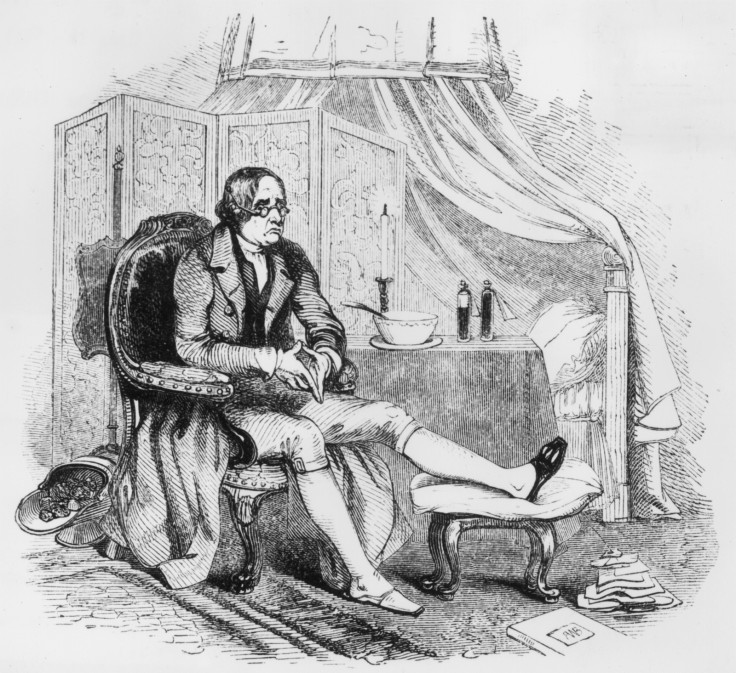Over 1 Million People in UK Suffer from Gout: What is the 'Disease of Kings'?

One in 40 people in the UK suffer from gout, a severe form of arthritis, a charity has said.
The disease can be so painful that 83% of sufferers struggle to walk or put on shoes and 9% take time off work.
The figures, published in the Gout Nation 2014 report by Arthritis Care, found 4% of patients under 65 give up work entirely.
Around 10% of gout sufferers diagnose themselves online, while 21% said they do not receive enough information from their GP about the long-term drug therapy treatments that are available.
A total of 1,259 people with gout were questioned in a YouGov survey about their experiences with the condition.
Judi Rhys, chief executive of Arthritis Care, told ITV News: "The number of people living with gout and being diagnosed every year is continuing to increase, yet we as a nation are still not taking this condition seriously.
"We need new quality standards on the treatment of gout and we are calling on The National Institute for Clinical Excellence to take this forward."
At the end of September, it was reported that North Korean leader Kim Jong-un is believed to be suffering from gout, according to South Korean media.

What is gout?
Historically known as the "disease of kings" or the "rich man's disease", gout is a medical condition which normally consists of recurring attacks of acute inflammatory arthritis.
Joints become extremely tender, hot and swollen and in cases of gout, the metatarsal-phalangeal joint at the base of the big toe is most commonly affected.
It is also caused by elevated uric acid in the blood, which causes crystals to deposit in joints, tendons and surrounding tissues.
Higher levels of uric acid are linked to alcohol, diet, obesity and high cholesterol, which is why the disease was once largely confined to those who could afford an indulgent lifestyle.
As well as affecting the big toe and foot, known as podagra, gout may present itself as tophi (small lumps under the skin), kidney stones or urate nephropathy – rapidly decreased kidney function.
Gout has become more common in recent years and is believed to be due to increasing risk factors in the population, such as metabolic syndrome (a disorder of energy utilisation and storage), longer life expectancy and changes in diet.
The condition is more common in men than women, because the female hormone oestrogen, released during the reproductive cycle, reduces a woman's levels of uric acid by increasing excretion via the kidneys.
How is it treated?
There are two main goals in treating gout: relieving symptoms and preventing future attacks. Relief can be given in the form of ice packs and taking non-steroidal anti-inflammatory painkillers.
According to the NHS, medications such as colchicine and corticosteroids may also be needed.
Lifestyle changes can prevent future attacks of gout, such as losing weight for those who are overweight and taking drugs to lower uric acid levels.
© Copyright IBTimes 2025. All rights reserved.






















